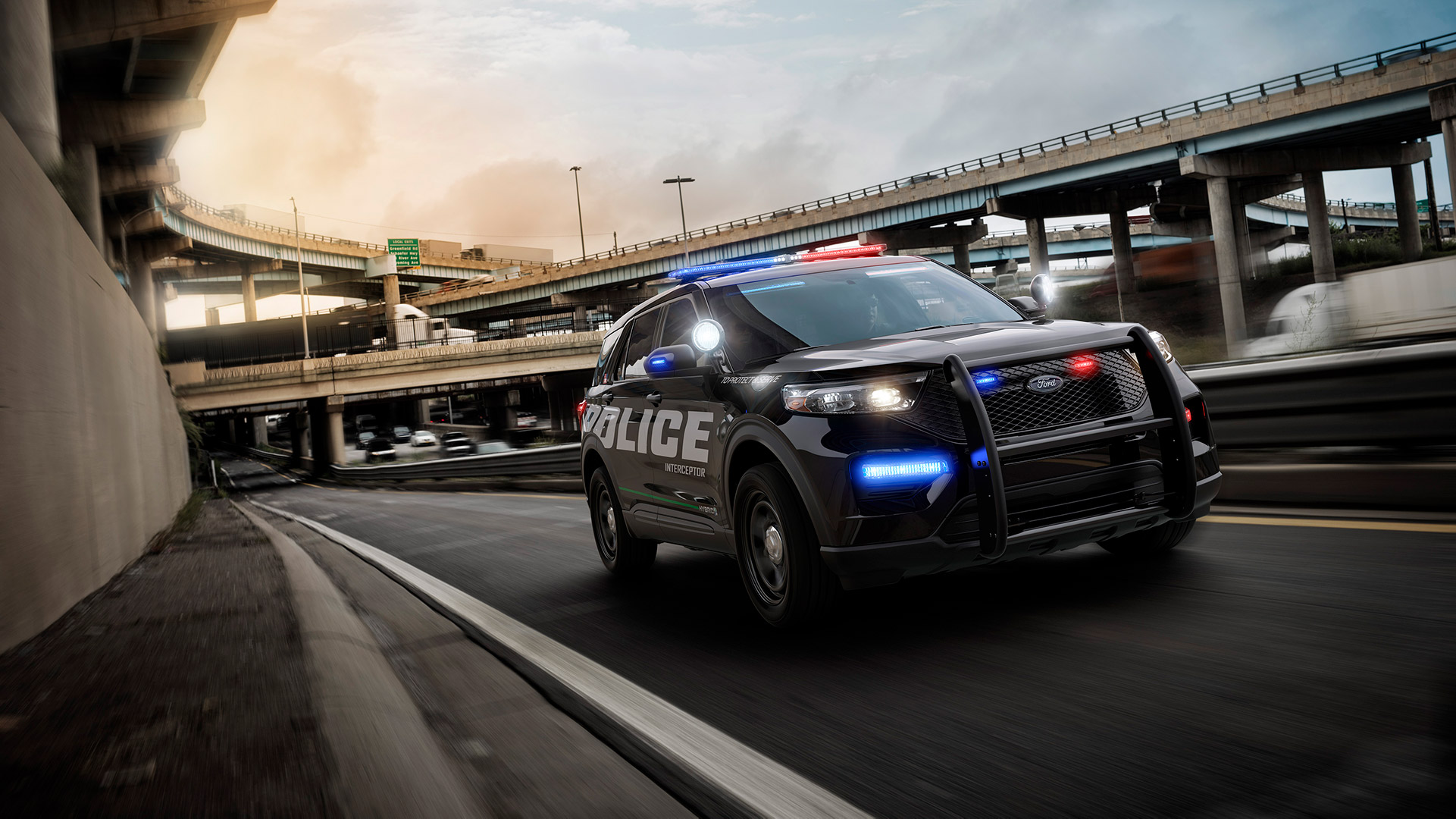

Starting soon, law enforcement will have a new high-speed toy to catch the baddies all across the country. It’ll also be a hybrid. Ford’s new Police Interceptor Utility is that and more, so you’ll want to memorize the headlights so you don’t get busted.
As we teased late last year, the Police Interceptor Utility is based on the same new platform that underpins the 2020 Ford Explorer and 2020 Lincoln Aviator. This rear-wheel drive architecture is a departure from the previous Interceptor Utility. But they will not be rear-wheel drive. All cop versions of the Explorer will be all-wheel drive.
Three powertrains will be available for the Police Interceptor Utility. The standard offering will be the 3.3-liter V6 hybrid, with options for a non-hybrid version of the 3.3-liter V6 or a 3.0-liter EcoBoost V6. Like the Ford F-150 and Mustang, the Police Interceptor Utility gets Ford’s 10-speed automatic transmission that was originally co-developed with General Motors.

In testing by the Michigan State Police—who test all new police vehicles and the data is used by agencies across the country—the new Police Interceptor Utility had the fastest 0-100 miles per hour acceleration time, the fastest lap around the test track, and the highest top speed. This beat out competitors’ V8 offerings.
If that’s not fast enough, the 3.0-liter EcoBoost is faster, though in a statement from Ford no performance metrics were given.
The hybrid, while being a solid performer, is also fuel efficient. According to Ford’s projections, the Police Interceptor Utility hybrid can save $5,700 annually in fuel costs over the current unit with the 3.7-liter gas engine. If you project that out to all Police Interceptor Utilities sold in 2017, Ford says that’s up to $193 million in savings, or 43 million gallons of fuel.
Because of the high-capacity lithium-ion battery on board, the Interceptor Utility can be turned off for extended periods of time while the electronics that the officer needs still work. No more having to leave the car idling.

Safety is a top priority with the new ride, so Ford included a Police Perimeter Alert that uses sensors to monitor the area around the vehicle. If someone approaches, the rear camera turns on, the windows roll up, and the doors lock.
Ford’s lineup of Police Interceptors, like the new Explorer-based one, are engineered to meet a 75 mph rear crash standard—federal standard is only 50 mph. Other features like autonomous emergency braking with pedestrian detection are on board. What’s unique to the Police Interceptor Utility is that the system can be disabled if the driver needs to perform a precision maneuver with the front of the vehicle.
Everything is also beefed up to handle police work. Cop brakes, cop suspension, you name it. It’ll handle an 8-inch curb impact and even ford 18-inches of water at 15 mph or 10-inches of water at 40 mph.
Specific horsepower numbers were not provided, likely because the 2020 Ford Explorer hasn’t been revealed yet. Regardless, this is a vehicle that you won’t likely want to run from.